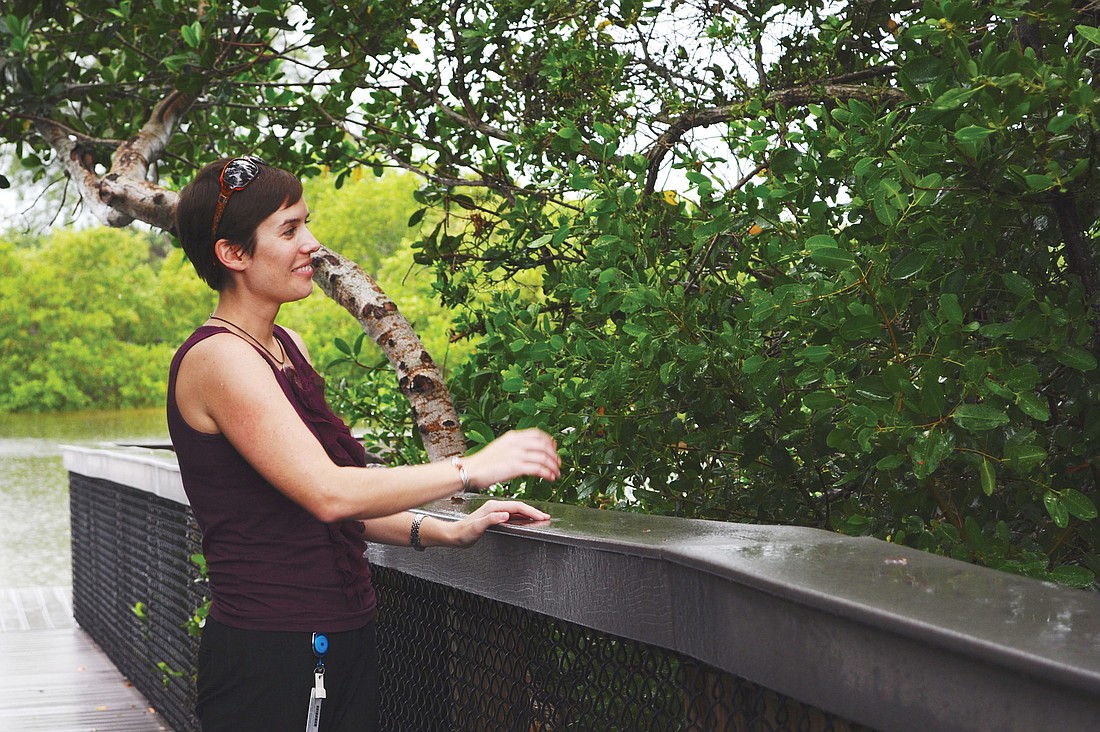- October 19, 2022
-
-
Loading

Loading

The lagoon in Turtle Beach Park offers a unique view of a thriving mangrove habitat.
“It’s really special,” says Sarasota County project scientist Rachel Herman during an interview in the nearby pavilion.
But, there’s one problem — the protected plants, and other species have grown so prolifically that it’s possible to drive around the park and onto Blind Pass Road without knowing it exists. County Natural Resources and Parks and Recreation staff are coordinating a plan to educate the public about the coast’s natural resources.
County Natural Resources project manager Matt Osterhoudt spent two recent meetings of the Sarasota Tree Advisory Council presenting historical and current statistics of mangrove trimming, which can kill the plant life if done improperly, or in excess, he said. The state has regulations in place, and the county acts as a coastal watchdog, but educating property owners about the benefits mangroves provide, and how to manage their growth, is a never-ending challenge, Herman said.
Sarasota County is in the planning stages of an innovative way to teach about trimming and other facts about mangroves, with an outdoor classroom in Turtle Beach Park. County staff or contractors would legally trim a section of the plants around the lagoon for an audience of arborists, and film it for public view.
Parks and Recreation staff clips away invasive species around the lagoon at Turtle Beach Park as part of ongoing plant management. But, right now, the plants are too dense for county staff and the Florida Department of Environmental Protection to determine how much, if any, of the mangroves can be clipped.
“I couldn’t even name all the fish that rely on mangroves,” Herman said. Many of the fish that anglers pull out of Sarasota Bay cut their fins among mangrove roots, and kayak tours rely on the lush green pathways and their eco-system to attract customers. .
“It’s your backyard,” Osterdhoudt said. “But, it’s a backyard we all share.”